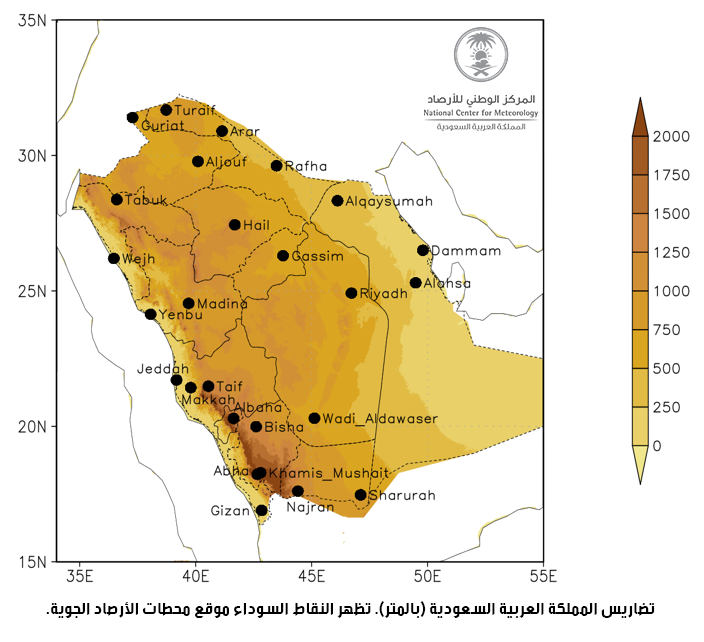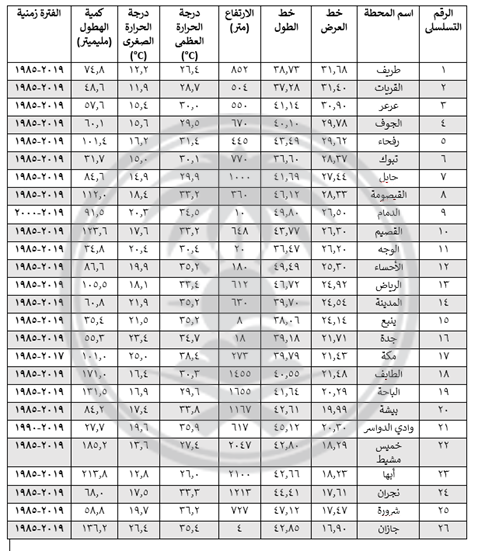Use of Cookies by this site is just to guarantee Ease of Access and better user experience while browsing. Continuation of your browsing acknowledges your approval for Terms and Conditions of this site and its use of Cookies.
Privacy PolicyClimate of Kingdom
The climate of the Kingdom of Saudi Arabia is characterized by a semi-arid to dry desert climate with hot days and cool nights, and very low annual rainfall, with the exception of the Asir region in the southwestern parts of the Kingdom, which receives an average rainfall of about 300 mm annually. The maximum temperature ranges throughout the country are as follows: 20-30°C during the winter from December to February, 30-40°C during the spring from March to May, 35-45°C during the summer from June to August 25- 35°C during the fall season from September to November. There are two distinct regions in Saudi Arabia regarding rainfall during the year. In winter, the northern and central parts receive rainfall due to the interaction of westerly winds (low pressure systems moving eastward from the Mediterranean Sea) with the extension of the Sudan Low. While in summer, the southwestern parts of Saudi Arabia receive rainfall due to the shift of the tropical convergence zone and the monsoon circulation and their interaction with the topography of the region. There is also a distinct difference in climate between coastal and inland areas. The figure shows the topography of the Kingdom of Saudi Arabia.

The climate of Saudi Arabia is characterized by a semi-arid to dry desert climate, with hot days and cool nights, and very low annual rainfall with the exception of the Asir region in the southwestern parts of the Kingdom, which receives about 300 mm annually on average. The maximum temperature across the country ranges from 20-30°C, 30-40°C, 35-45°C, and 25-35°C in the season from December to February, March-May, June-August and September-November ( Respectively, there are two distinct regions in Saudi Arabia regarding rainfall per year in winter, the northeastern parts of Saudi Arabia receiving rainfall from the western interaction (low pressure systems moving eastward from the Mediterranean Sea) and the Sudan Basin (extension). Low Sudan). While in summer the southwestern parts of Saudi Arabia receive rainfall due to the shift of the intertropical convergence zone and the interaction of the monsoon circulation with the topography. The two other distinct differences in the country's climate can also be found between the coastal and inland regions.
List of meteorological stations in Saudi Arabia with long-term climate records along with latitude, longitude, altitude, average (1985-2019) maximum and minimum temperature and precipitation.

Summary of the climate situation in the Kingdom of Saudi Arabia for the year 2023 AD
Last Modified Date 07/02/2025 - 5:32 PM Saudi Arabia Time
Was this page helpful?
3 of users said yes from 1 comments

.png)